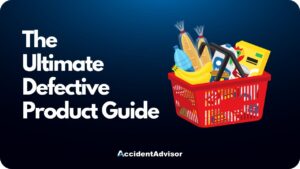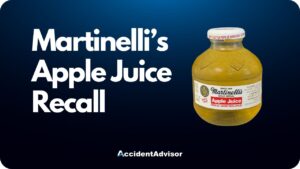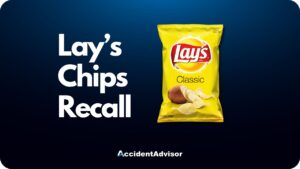Product recalls and defective product settlements are on the rise. Millions of consumers are impacted by defective product annually. The biggest recalls include food, baby clothes, pharmaceuticals, and more.
If you or a loved one has sustained defective product injuries, you may be considering a product injury settlement to compensate your medical costs. Defective product cases are not simple, however, and navigating product liability laws can prove too much for most people, especially while they are recovering from an injury.
Contact an attorney experienced in product liability cases to help you get the compensation you deserve for a company’s mistake while you focus on treating your injuries.
Table of Contents
- Product Liability Laws
- Types of Defective Product Cases
- Types of Defective Product Damages
- How to Calculate Defective Product Settlements?
- What Factors Affect Defective Product Settlements?
- Class-Action Lawsuit Settlements
- Famous Defective Product Settlements
- Do You Need a Product Injury Lawyer to Get a Defective Product Settlement?
- Conclusion
Product Liability Laws
Every state has different product liability laws, but most follow a similar logic in how they detail the legal responsibilities of manufacturers, distributors, and retailers for making and selling safe products.
“Strict liability” and “negligence” represent the two main aspects of product liability law that define when a company is liable for damages caused by its products. These terms are the foundation of a successful defective product case.
View this page to learn more about how different states define these terms in different ways but continue reading for a broad understanding of what they mean and how they could be used in your product liability case.
Strict Liability
Strict liability is the legal precedent that makes companies that design, make, market, and sell products responsible for defective product injuries. A case that invokes strict liability only needs to prove that the injured person was injured by that product.
Whether the company knew about the defect or intentionally hurt customers does not factor into strict liability. Failing to properly warn customers of a product’s dangers can fall under strict liability as well.
The validity of strict liability has been debated since the defendant’s intentions are usually significant in liability cases. However, for your defective product settlement, your state’s strict liability laws could be a major asset.
Negligence
Negligence more closely aligns with how most liability cases are viewed in that you must prove that the company you are suing caused your injuries through carelessness. This could apply to the designer, maker, distributor, or retailer of the product, depending on the actions that led to your injury.
Product liability cases could invoke negligence laws if the company broke a law in the creation or sale of the product, if that law’s purpose is to protect consumers from harm, and if you were then hurt by that product. In negligence cases, the federal, state, or even county laws relating to the type of product you are suing for become significant to your settlement.
Types of Defective Product Cases
Defective product cases can have multiple defendants depending on the type of case you make, including anyone in the designing, manufacturing, and sales chain involved with the product.
This means that while it may seem most obvious to sue the company whose name is on the product, your choice of defendant needs to be more accurate than that. An attorney can help you figure out if your injury was caused by the design, manufacturing, distribution, or marketing of the product.
This is significant since even a winning argument can result in a losing case if you are suing the wrong defendant. Speak with a product liability attorney to learn more about who you should be suing based on the following types of defective product cases.
Manufacturing Defects
Defective product injuries can be caused by manufacturing defects, which include anything that happens in the process of making the product at the factory. This includes accidental chemical contamination, machine error, or damaged merchandise.
Design Defects
Design defects refer to flaws in how the product was conceived, which can cause them to be defective “by design.” Examples include insufficient structural supports, flammable materials, dangerous strap designs, and more.
Failure to Provide Adequate Warnings
A product injury settlement can also concern inadequate warning labels about a product’s safety, including failing to inform consumers about toxins or failing to include safety procedures.
Types of Defective Product Damages
Defective product damages can be economic, non-economic, or punitive, and how they are calculated impacts the strength of your case.
Economic
To calculate a product injury settlement, you first need to calculate the medical expenses related to your injury. This includes your current and future medical expenses, testing costs, therapy bills, medication costs, lost wages, transportation costs, and anything else you pay because of your injury.
Non-economic
In addition, you can be compensated for non-economic damages such as pain and suffering, emotional damage, depression, and more.
Punitive
Punitive damages are those that your legal team believes the responsible company should pay due to legal negligence. This can include failing to recall a product, foreknowledge that the product could cause injuries, or hiding the evidence of its dangers.
How to Calculate Defective Product Settlements?
To calculate defective product settlements, you should add economic and punitive damages, then multiply that number by a multiplier that represents emotional damages like pain and suffering. An attorney can help you choose a multiplier based on the available evidence and similar cases.
Other factors that could influence your settlement include loss of consortium, which refers to any negative effects the injury had on your relationships, or specific loss, such as an amputation.
A successful case properly defines each cost in legal terms. If you are part of a class-action lawsuit, you may not have to prove the company’s negligence, but you should always have evidence that justifies your settlement calculations.
What Factors Affect Defective Product Settlements?
The factors that will affect your defective product settlement include the severity of the injuries and the impact they will have on your life. For instance, the immediate medical expenses you paid in response to your injury are calculated as part of your settlement, but predictions for future medical expenses should factor in as well.
The severity of your injuries will change your product settlement, but you need to calculate the damages you hope to settle using more than just your current feelings and expenses. The injuries you sustained could negatively impact your quality of life, reduce your ability to work, or force you to change careers altogether.
These factors should also be included in a defective product settlement, along with pain and suffering. An attorney is usually required to help you accurately assess pain within the letter of the law, but evidence such as your testimony and the testimonies of your family and friends could validate your settlement calculations.
Class-Action Lawsuit Settlements
While you may think a product injury settlement pertains only to your situation, you may be able to join a class-action lawsuit to get more compensation for your injuries. Class-action lawsuits group similar cases together against a common defendant to be settled on behalf of all of them.
In court, only the lead plaintiff presents their case, but the outcome affects all those who are part of the class action. The main advantage of class-action lawsuits is that individuals can receive compensation without paying expensive legal fees to be represented individually in court.
Settlements are awarded unequally among the members of the lawsuit based on their injuries, so a class action may net you a larger settlement if it rules in your favor. However, you cannot reject or resettle the compensation you receive from a class-action case, and if the class-action fails, you cannot also file an individual lawsuit for the same claim.
Famous Defective Product Settlements
Here are some examples of famous defective product settlements:
- Philip Morris Tobacco – In 2002, a woman claimed the company insufficiently warned her about the dangers of smoking, which caused her cancer, resulting in a $28 billion settlement.
- General Motors Co. – GM paid millions of customers a total of $150 million in damages over a coolant that damaged their engines.
- Owens Corning Asbestos – A 1998 case where Owens Corning paid $1.2 billion in damages to settle cancer cases caused by their building materials.
- Dow Corning – In another 1998 case, Dow Corning paid $3.2 billion in damages when a class action claimed that their silicone implants were exploding, causing bodily harm.
- McDonald’s – In 1992, a lady named Liebeck sued McDonald’s for being burned by hot coffee so badly that she needed skin grafts, resulting in a $640,000 settlement.
- Takata – A 2014 class-action lawsuit was filed against the airbag manufacturer, Takata, whose faulty devices resulted in hundreds of injuries, 16 deaths, and $1 billion in damages.
- Blitz – In 2012, dozens of cases were filed against Blitz for their portable gas cans, which exploded, causing several fatal injuries and resulting in an average settlement of $4 million per plaintiff.
- Toyota – In 2010, Toyota settled a class-action lawsuit for $1.1 billion when their faulty accelerator pedals caused several accidents and deaths.
- Johnson & Johnson – A defective product lawsuit is ongoing against Johnson & Johnson for talcum powder products that can cause cancer due to asbestos contamination, currently set at an $8.9 billion settlement.
- 3M Military Earplugs – 3M settled for $9.1 million in damages when military service members and veterans became part of a class action defective products lawsuit alleging that the company knowingly sold earplugs that offered incomplete protection, resulting in hearing injuries.
Do You Need a Product Injury Lawyer to Get a Defective Product Settlement?
A product injury lawyer is an asset in trying to receive a defective product settlement. In most cases, the manufacturers or distributors of products have efficient legal teams that won’t pay your settlement without a fight.
An attorney can help you pick the right defendant, assemble the evidence, file on time, and calculate your settlement accurately. While joining a class-action lawsuit can make things easier since you’re not in control of the trial, the process isn’t always straightforward, requiring that you file accurate evidence within precise deadlines.
You can opt to represent yourself, but to ensure a favorable settlement, an attorney experienced in product liability cases can be a valuable ally against the corporate lawyers who will be stacked against you.
Conclusion
Defective product injuries can be life-altering, but the process of filing for compensation against a corporation’s legal team can be so complicated that many victims never receive compensation for them. Choosing the lawsuit type and the defendant, calculating the damages, and potentially joining a class-action lawsuit could all impact your settlement amount. Speak with an attorney experienced in defective products to learn the best way to get compensated for your injuries.

Rocky Horton
Author
Rocky Horton is a health and safety expert from Chapel Hill, NC. He is the founder of AccidentAdvisor and has been featured in Forbes, Bloomberg, and other publications. Learn more.













